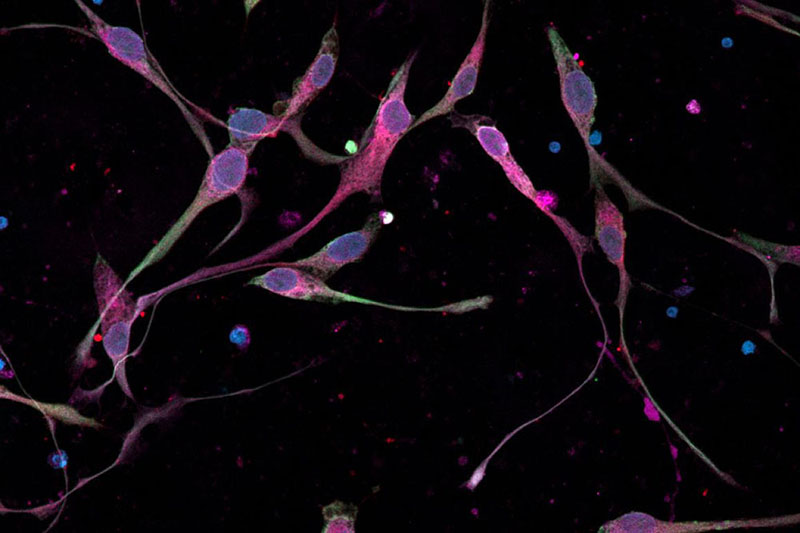Scientists find promising drug combination against lethal childhood brain cancers
Studies in cell and animal models reveal insights into cancer cells’ vulnerability that could lead to new strategies against brain cancers
Researchers have devised a new plan of attack against a group of deadly childhood brain cancers collectively called diffuse midline gliomas (DMG), including diffuse intrinsic pontine glioma (DIPG), thalamic glioma and spinal cord glioma. Scientists at the National Institutes of Health, Stanford University, California, and Dana-Farber Cancer Institute, Boston, identified a drug pair that worked together to both kill cancer cells and counter the effects of a genetic mutation that causes the diseases.
The researchers showed that combining the two drugs – panobinostat and marizomib – was more effective than either drug by itself in killing DMG patient cells grown in the laboratory and in animal models. Their studies also uncovered a previously unrecognized vulnerability in the cancer cells that scientists may be able to exploit to develop new strategies against the cancer and related diseases. The results were published Nov. 20 in Science Translational Medicine.

DIPG is a rare, deadly childhood brain cancer. Here, a confocal micrograph shows DIPG cells, grown from patient cells, in culture.
This page was last updated on Friday, January 21, 2022